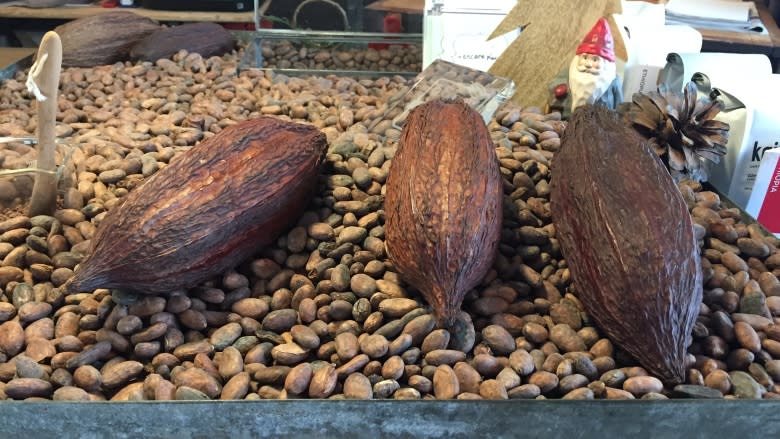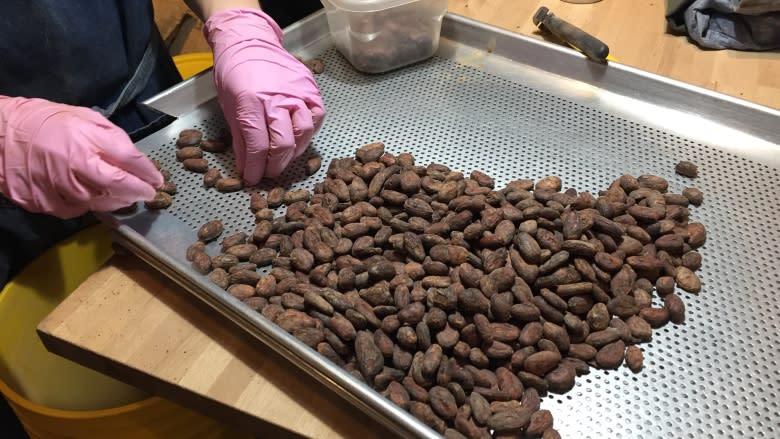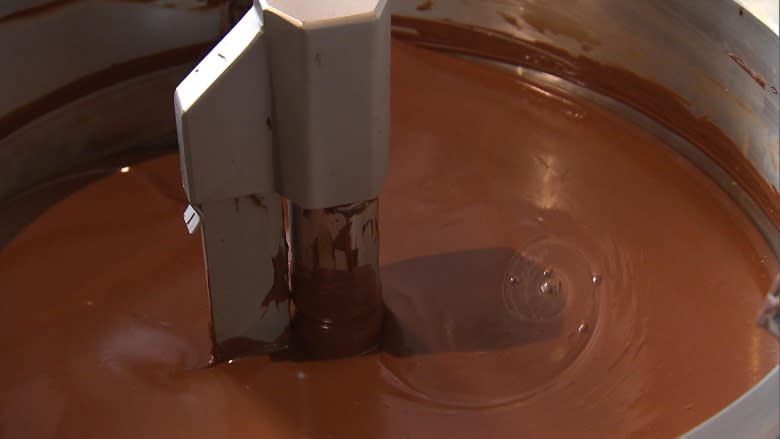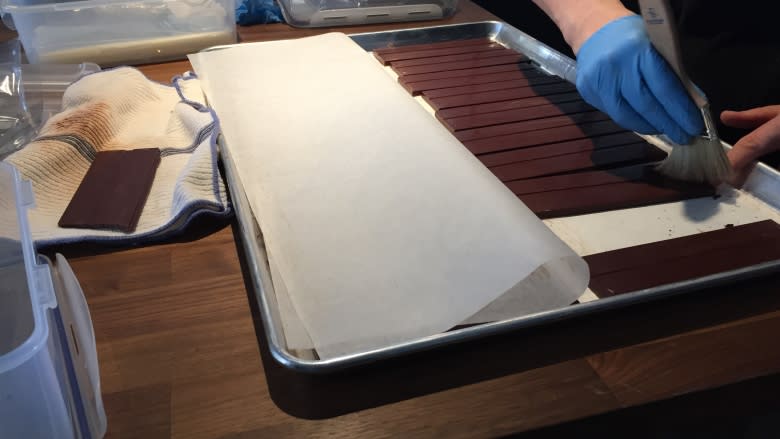Quebec chocolate maker joins growing bean-to-bar movement
Montreal architect Christine Blais was looking for a change, as she plotted her return to the workforce three years ago after having her children. Blais knew she wanted to work with her hands.
"I didn't feel like going back into an architect's office in front of a computer all day," she said.
"I was Googling, like many people do at night before they go to bed, and I discovered the bean-to-bar movement by a family that was doing the same thing in Portland, Oregon," Blais recalled.
Blais said she was more of a Kit-Kat fan than a high-end chocolate lover, but she soon fell in love with process.
She started making bars in her kitchen, and with the encouragement of friends eventually set up her own studio in Mont Tremblant, where her family has a second home.
Working in the smaller Laurentians community gives her "peace of mind," she said.
"I didn't want to be in the chaos of Montreal, like traffic and stuff like that," Blais said. "It's more like an artist's studio."
Blais commutes between Montreal and Mont Tremblant.
Her atelier has now expanded to 140 square metres, or 1,500 square feet, and she has two employees working for her.
Blais said chocolate is now her passion.
How bean-to-bar works
The cacao bean comes from the fruit of the cacao tree — pods that can range in size from a lemon to a small football.
Inside are the seeds or the beans, which are white when the pod is first opened. Farmers take these seeds and let them ferment for several days, a process which turns them brown.
Those beans are shipped to Blais's workshop in large 70-kilogram bags. Blais sources her beans through a co-operative that works with farmers in Central and South America, Asia and Africa.
From there, the beans are sorted by hand and checked for any defects. The beans that make the cut are then roasted.
Blais uses a chicken roasting oven. She follows her instincts more than a temperature reading to know when the beans are ready.
"Sometimes it's the smell, the noise — the crack — I know that they're ready."
Once the beans are roasted, the husk needs to be separated from the nib inside a modified juicer with a vacuum system attached. The nibs are stored in large buckets before heading to the grinder.
The beans are then ground between two stone tablets for hours, eventually turning into a peanut butter-like consistency before they eventually transform into a liquid.
It's at this stage that Blais adds the only other ingredient included in the chocolate — natural cane sugar, or occasionally, maple sugar.
The chocolate is then cooled into blocks and aged on shelves to take out the acidity. This process can take days or weeks.
Once the aging is done, they are ready to be melted again and tempered into moulds before being packaged and sold.
Award-winning chocolate
Blais has now won medals at the International Chocolate Awards in the Americas and World categories. She says the awards are a way for her to tell if she's moving in the right direction.
She also sells the chocolate of other bean-to-bar makers in her shop.
"People say, 'That's your competition,'" she said. "No, it's my family, we all produce the same kind of chocolate. We put the same amount of work and passion in our chocolate."
"I see them sometimes, like once a year in conferences, and we discuss and help each other. It's like the beer movement: it's like a community."
That community includes several bean-to-bar producers in Montreal, as well as a producer in Carleton-sur-Mer.








